Abstract
The reflex response to stretch has been studied in the upper limb of 20 spastic patients. The amplitude of reflex EMG was found to be closely related to the velocity of stretch. Reflex EMG in biceps and triceps muscles was augmented by increasing the length of the muscle, although minimal inhibition of reflex EMG in biceps was obtained in two patients by extreme stretch. The clasp-knife sensation in the upper limb cannot be related to autogenic inhibition but may be explained by the characteristics of a velocity-dependent reflex in which limb movement is braked by the mechanical effect of increasing muscle tension. It is suggested that this be called the pseudo-clasp-knife reaction to distinguish it from the clasp-knife phenomenon of the quadriceps muscle, since the underlying neurophysiological mechanism is quite different.
Full text
PDF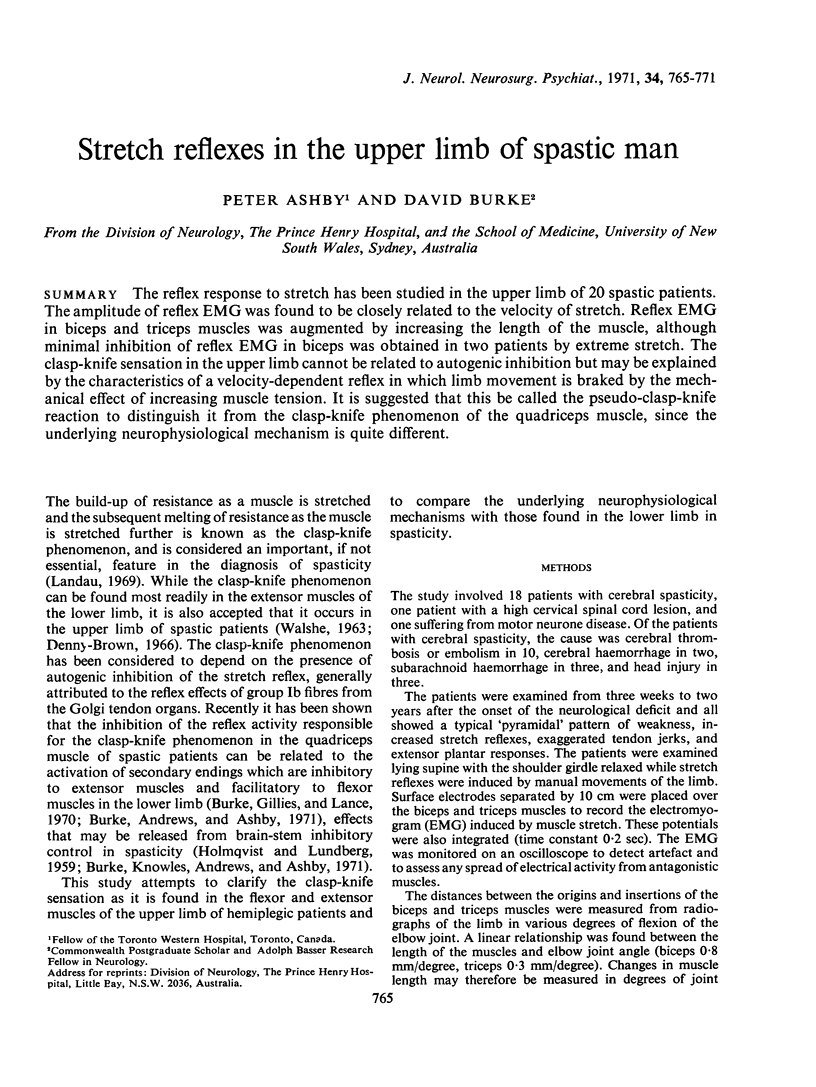
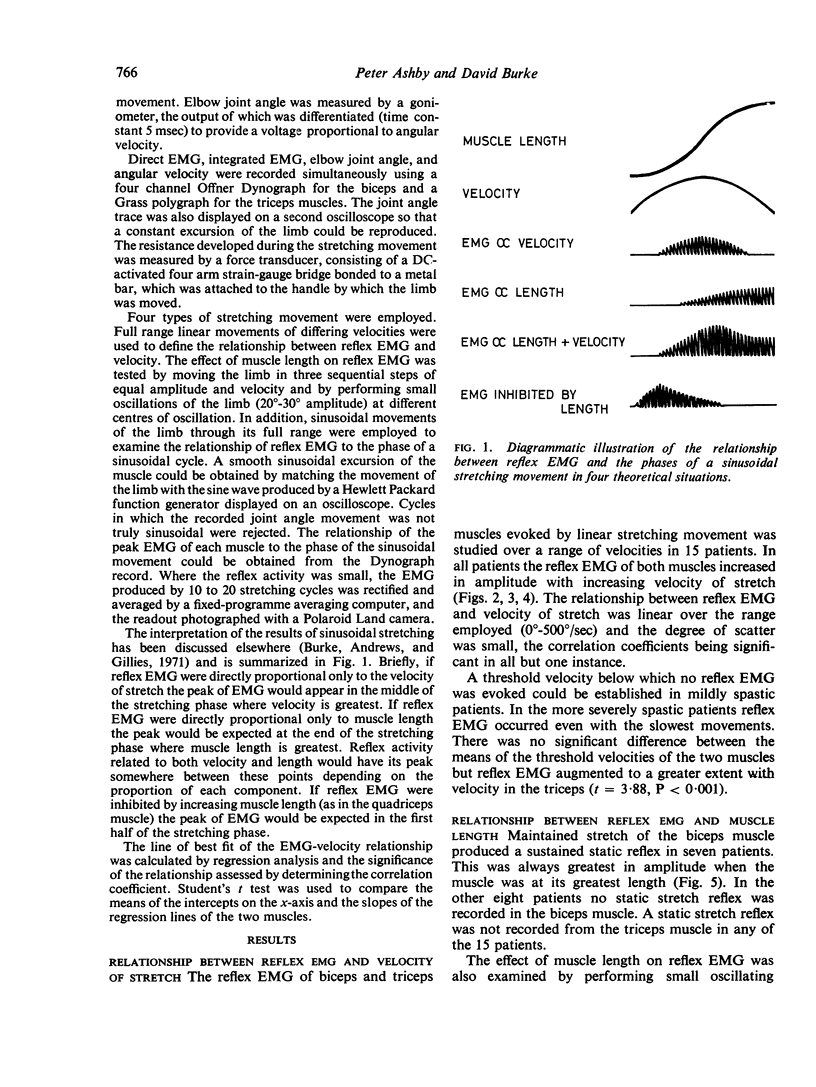
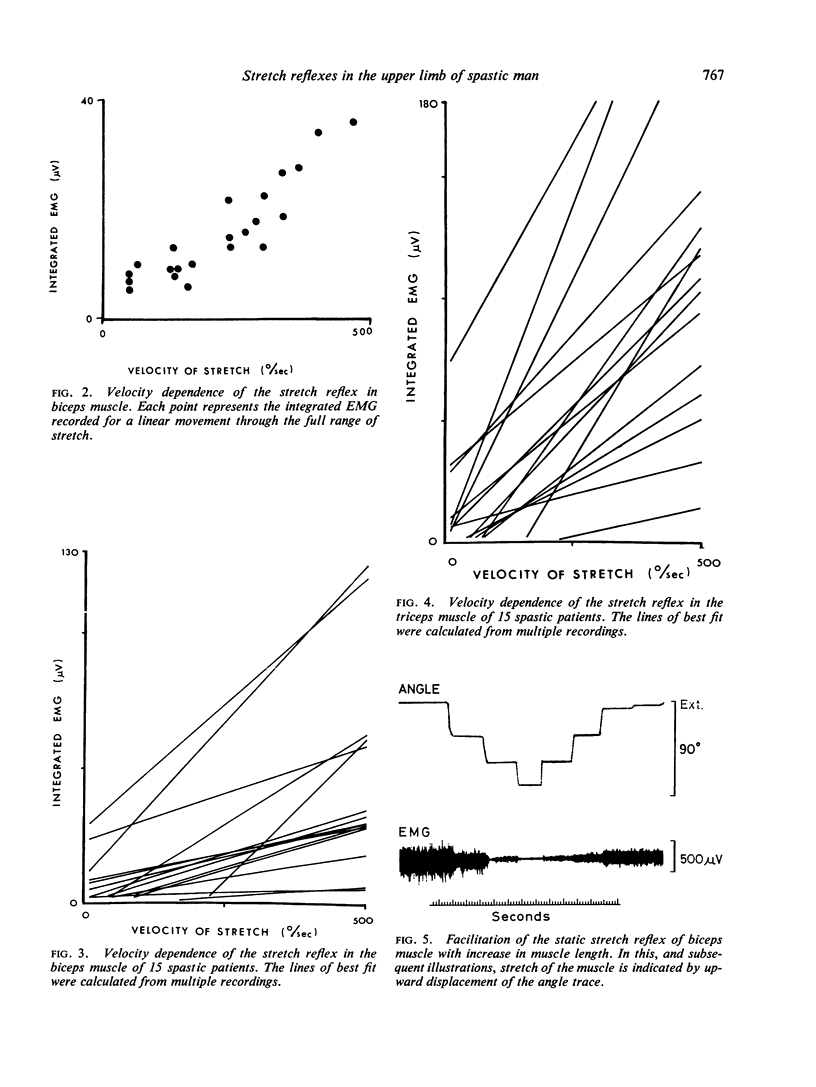
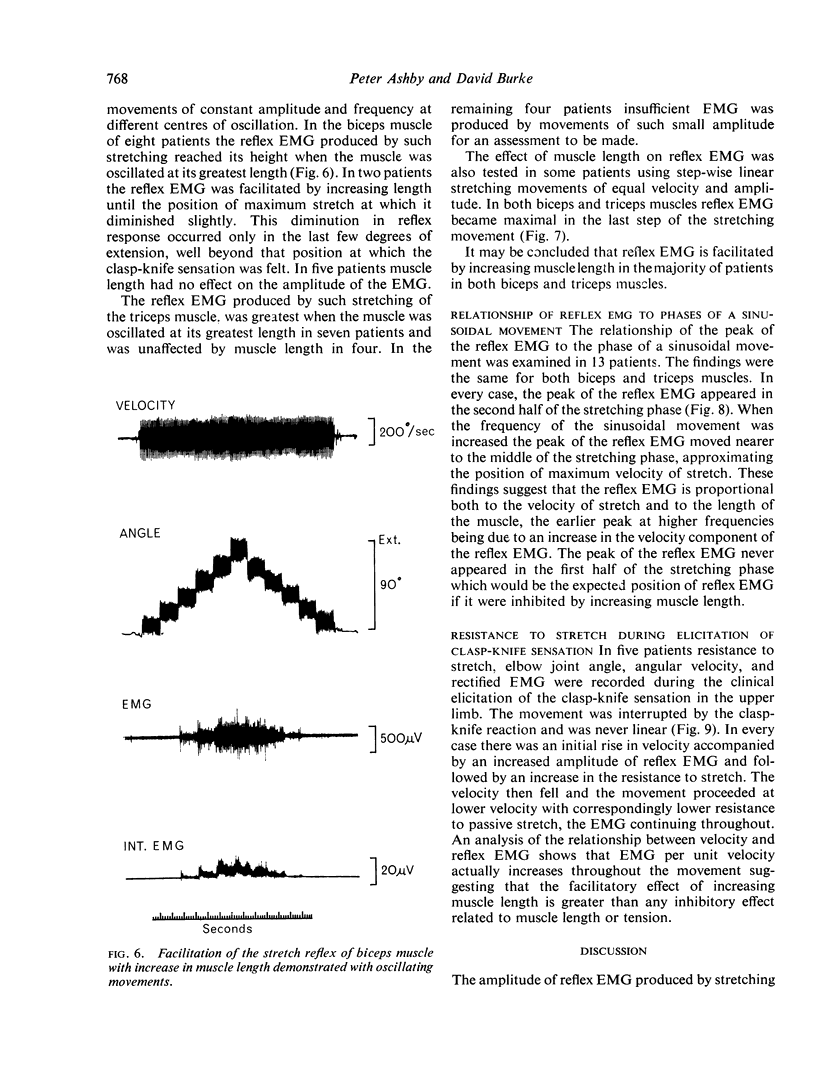
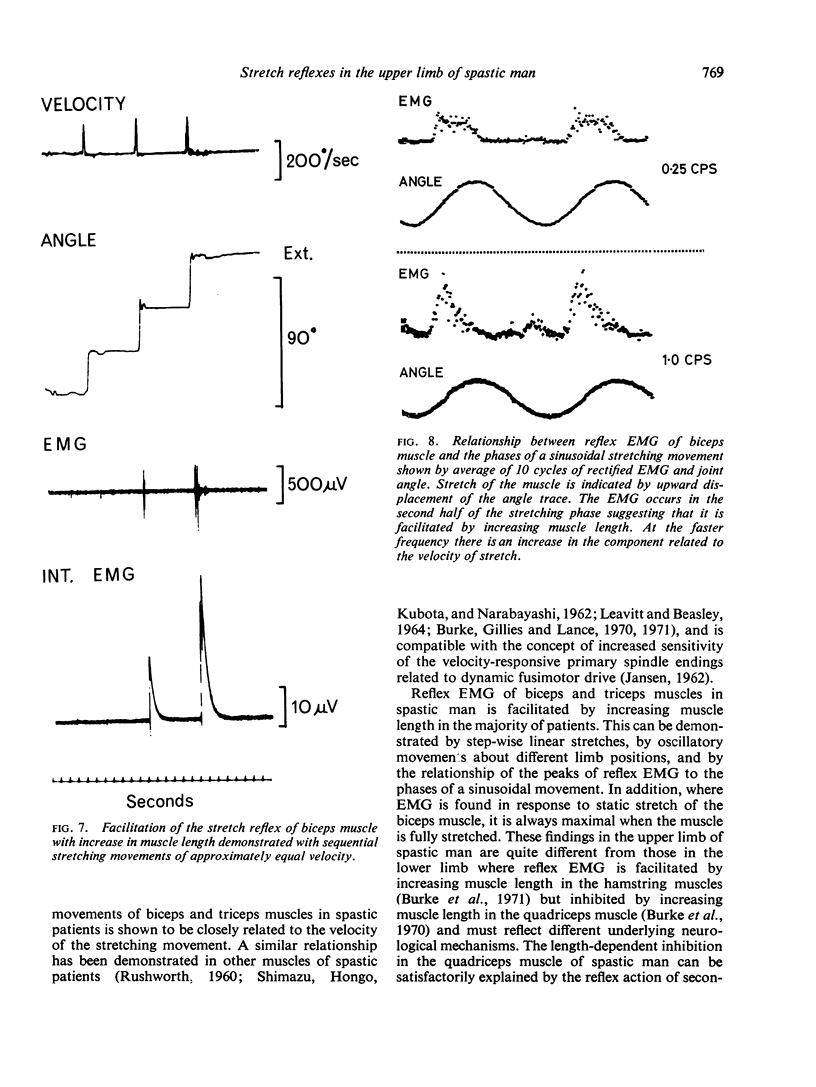

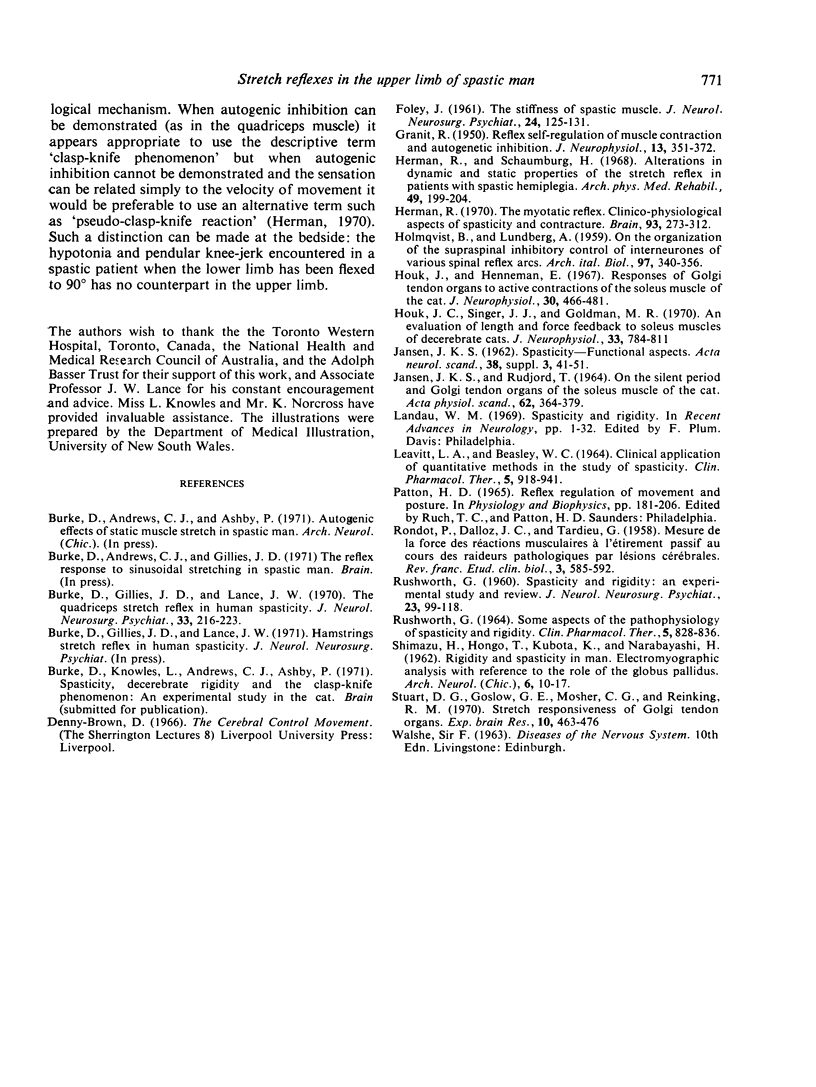
Selected References
These references are in PubMed. This may not be the complete list of references from this article.
- Burke D., Gillies J. D., Lance J. W. The quadriceps stretch reflex in human spasticity. J Neurol Neurosurg Psychiatry. 1970 Apr;33(2):216–223. doi: 10.1136/jnnp.33.2.216. [DOI] [PMC free article] [PubMed] [Google Scholar]
- FOLEY J. The stiffness of spastic muscle. J Neurol Neurosurg Psychiatry. 1961 May;24:125–131. doi: 10.1136/jnnp.24.2.125. [DOI] [PMC free article] [PubMed] [Google Scholar]
- GRANIT R. Reflex self-regulation of muscle contraction and autogenetic inhibition. J Neurophysiol. 1950 Sep;13(5):351–372. doi: 10.1152/jn.1950.13.5.351. [DOI] [PubMed] [Google Scholar]
- Herman R., Schaumburg H. Alterations in dynamic and static properties of the stretch reflex in patients with spastic hemiplegia. Arch Phys Med Rehabil. 1968 Apr;49(4):199–204. [PubMed] [Google Scholar]
- Herman R. The myotatic reflex. Clinico-physiological aspects of spasticity and contracture. Brain. 1970;93(2):273–312. doi: 10.1093/brain/93.2.273. [DOI] [PubMed] [Google Scholar]
- Houk J. C., Singer J. J., Goldman M. R. An evaluation of length and force feedback to soleus muscles of decerebrate cats. J Neurophysiol. 1970 Nov;33(6):784–811. doi: 10.1152/jn.1970.33.6.784. [DOI] [PubMed] [Google Scholar]
- Houk J., Henneman E. Responses of Golgi tendon organs to active contractions of the soleus muscle of the cat. J Neurophysiol. 1967 May;30(3):466–481. doi: 10.1152/jn.1967.30.3.466. [DOI] [PubMed] [Google Scholar]
- JANSEN J. K., RUDJORD T. ON THE SILENT PERIOD AND GOLGI TENDON ORGANS OF THE SOLEUS MUSCLE OF THE CAT. Acta Physiol Scand. 1964 Dec;62:364–379. doi: 10.1111/j.1748-1716.1964.tb10435.x. [DOI] [PubMed] [Google Scholar]
- RONDOT P., DALLOZ J. C., TARDIEU G. Mesure de la force des réactions musculaires à l'étirement passif au cours des raideurs pathologiques par lésions cérébrales. Rev Fr Etud Clin Biol. 1958 Jun;3(6):585–592. [PubMed] [Google Scholar]
- RUSHWORTH G. Spasticity and rigidity: an experimental study and review. J Neurol Neurosurg Psychiatry. 1960 May;23:99–118. doi: 10.1136/jnnp.23.2.99. [DOI] [PMC free article] [PubMed] [Google Scholar]
- SHIMAZU H., HONGO T., KUBOTA K., NARABAYASHI H. Rigidity and spasticity in man. Electromyographic analysis with reference to the role of the globus pallidus. Arch Neurol. 1962 Jan;6:10–17. doi: 10.1001/archneur.1962.00450190012003. [DOI] [PubMed] [Google Scholar]
- Stuart D. G., Goslow G. E., Mosher C. G., Reinking R. M. Stretch responsiveness of Golgi tendon organs. Exp Brain Res. 1970 Jun 25;10(5):463–476. doi: 10.1007/BF00234263. [DOI] [PubMed] [Google Scholar]


